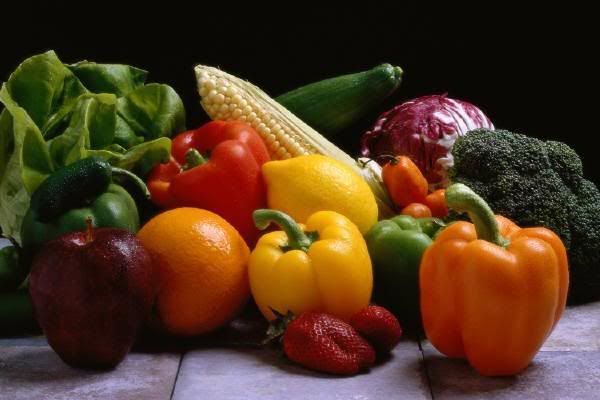 Suffers of Thyroid Disease can benefit from the nutrients and vitamins found in the super foods listed below. The list is not all-inclusive but represents some of the best. Foods containing selenium helps boost the body’s production of T3 hormone, which is key to stabilizing moods, weight, and energy levels. Excellent sources of Selenium are Brazil Nuts and Fish. Vitamins B2, B3, and B6 are important for proper cell oxygenation and needed for the synthesis of Thyroxine. Vitamin C improves the function of the immune system.
Suffers of Thyroid Disease can benefit from the nutrients and vitamins found in the super foods listed below. The list is not all-inclusive but represents some of the best. Foods containing selenium helps boost the body’s production of T3 hormone, which is key to stabilizing moods, weight, and energy levels. Excellent sources of Selenium are Brazil Nuts and Fish. Vitamins B2, B3, and B6 are important for proper cell oxygenation and needed for the synthesis of Thyroxine. Vitamin C improves the function of the immune system.Almonds can benefit the body in so many way that it is hard to believe such a small nut can pack so much. The nutrients contained in the almond are vitamin E, Vitamin B2, Protein, Magnesium and Potassium. They are high in dietary fiber and their “good fat” is monounsaturated fat. These little jewels possess an array of healing properties in heart and cellular health, promote weight loss, improve colon health, and protect you from anemia. They contain over 4 grams of fiber. You can eat almonds as an alternative to red meat for a dose of protein. Studies presented in The 2006 Obesity Societies Annual Scientific Meeting showed evidence that almonds help to satisfy hunger. In fact, eating one (1) handful of almonds of day could play a valuable role in weight management.
Apples contain natural ingredients that can help the body protect itself from heart attacks and promote longer life. One apple contains over 3 grams of fiber (peel included) and contains 8% of your daily value of Vitamin C. They are high in potassium content and the fiber found in apples can help to control Type II Diabetes. They contain Zinc, Copper Manganese, Niacin, B6, Vitamin A, Vitamin E, and Vitamin K. They can lower your LDL cholesterols up to 16%. Add two (2) apples to your diet daily for optimal benefits.
Blueberries are rich in antioxidants and probably carry more nutrients than any other fruit in the world, calcium, iron, magnesium, zinc, cooper, manganese, selenium, folate, and vitamins C, B6, A, E, and K. The contain pterostilben, which in lab studies has been linked to lowering cholesterol levels as well as demonstrating the remarkable ability to slowing down the aging process. Blueberries were also noted for improving vision, especially night vision. The antioxidants in blueberries contribute to creating less stress on the brain thus helping to prevent age-related problems such as dementia and improving short-term memory.
Garlic can have a powerful antioxidant effect. Antioxidants help to protect the body against damaging “free radicals.” Nutrients include calcium, iron, magnesium, zinc, copper, selenium, manganese, niacin and Vitamins C and B6. A powerful substance called “allicin” is found in garlic and it soon became clear that allicin was a major factor that contributed to the health benefits. Allicin teams up and works with thiamine (vitamin B1); the two combine to become allithiamine, a more power force than thiamine to repair the body. Garlic also contains a substance called “scordine” which is effective for increasing stamina, helping the body recover from fatigue, and for promoting metabolism. Garlic is regarded in Herbal Medicine as a Rejuvenator.
Onions contain many powerful nutrients like Vitamin C, Vitamin B6, dietary fiber, potassium, copper, folate, and manganese. Onions are potent in sulphur compounds, which can help bring high blood pressure down. Onions also are noted for high antioxidant activity. Onions have many healing benefits. Among the best is their ability to lower blood sugar levels. They promote bone health and act as a natural antibiotic keeping infections and viruses away.
Salmon is loaded with Vitamins B6, B3, B12, D, phosphorus, magnesium, and omega-3 fatty acids. Wild Alaskan Salmon is perhaps the best in the world for it is loaded with nutrients that keep our bodies healthy. Fatty acids are good for the body, especially the Omega-3 fatty acid found in Salmon. These fatty acids help prevent heart attacks, lower blood pressure and cholesterol levels. Protects from autoimmune and arthritis disorders. Other benefits include improvement in insulin sensitivity in people with Type-II Diabetes, helping to protect the body against cancer, eases menstrual pain and discomfort, effective in combating dry eye disease. Moreover, Omega-E is linked to lowering the chances of contracting Alzheimer’s or Dementia due to aging.
Tomatoes are loaded with nutrients including Vitamins B1, B6, C, A, K, B5 and contains niacin, potassium, protein, iron, folate, copper and Lycopene. The antioxidant Lycopene helps protect the body against prostate, colorectal, and pancreatic cancer.
 Alternatives to Coffee:
Alternatives to Coffee:Green or Black Tea is a great alternative to coffee. Researchers suspect that the catechins (helpful phytochemicals) in green tea may trigger weight loss by stimulating the body to burn calories and mildly decrease body fat. So indulge in either a cup of hot or cold tea.







